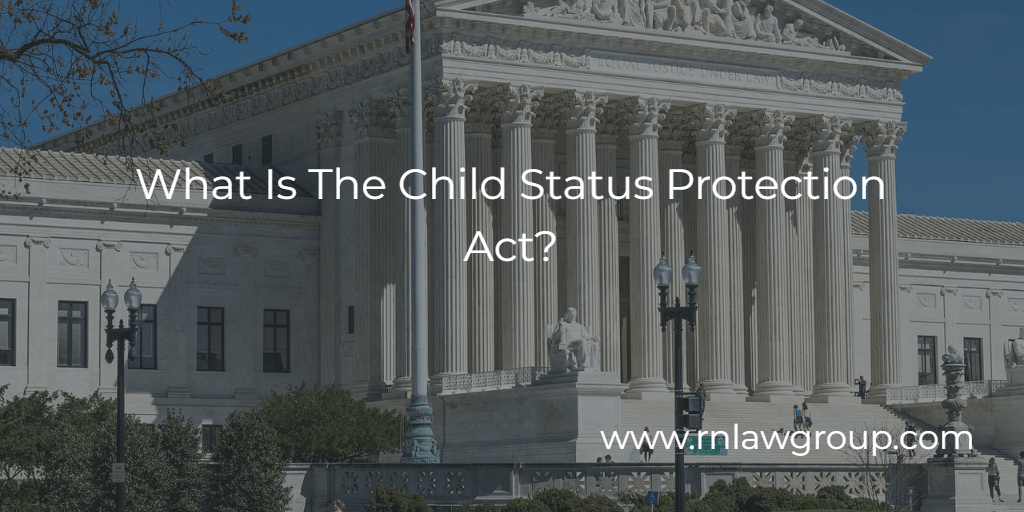
What Is The Child Status Protection Act?
Section 101(b)(1) of the Immigration and Nationality Act (INA) defines a child as a person who is unmarried and under 21 years old. As a general matter, children age out at age 21 and are no longer eligible as derivative beneficiaries. If someone applies for lawful permanent resident status as a child but turns 21 before being approved for LPR status (also known as getting a Green Card), that person can no longer be considered a child for immigration purposes. This situation is commonly referred to as “aging out” and often means that these applicants would have to file a new petition or application, wait even longer to get a Green Card, or may no longer be eligible for a Green Card.
As Congress recognized that many children were aging out due to backlogs and long processing times for some visa petitions, it enacted the Child Status Protection Act (CSPA) to provide relief to certain dependent children who otherwise would “age out” of eligibility to obtain immigration benefits upon reaching the age of 21 years before they can become lawful permanent residents with their parents by providing a method to calculate the child’s age that considers when an immigrant visa number “becomes available”. The CSPA went into effect on August 6, 2002. The Department of State’s Visa Bulletin is used to determine when a visa number becomes available. The Visa Bulletin has two charts – the Dates for Filing chart and the Final Action Date chart.
As per the previous CSPA guidance, USCIS considered a visa available for purposes of the CSPA age calculation based only on the Final Action Date chart, even if a noncitizen could apply for adjustment of status using the earlier date in the “Dates for Filing” chart. But, under the new guidance, USCIS will now use the Dates for Filing chart to calculate these noncitizens’ ages for CSPA purposes, which provides these noncitizens with more certainty about their eligibility to adjust status. Simply put, now the more favorable Dates for Filing chart, is the date the foreign national must use for purposes of qualifying for immigration benefits under the CSPA.
If these noncitizens were eligible to adjust status because of the change in policy and they have filed for adjustment of status, they will also be eligible to apply for employment and travel authorization based on their pending adjustment of status application, and they generally will not lose previously issued employment or travel authorization. Noncitizens may file a motion to reopen their previously denied adjustment of status application with USCIS by using Form I-290B, Notice of Appeal or Motion.
CSPA does not change the definition of a child. Instead, CSPA provides a method for calculating a person’s age to see if they meet the definition of a child for immigration purposes. Under the CSPA, a child’s age is calculated by looking at the actual age on the date that the priority date for the green card case became current, or the date on which the underlying immigrant petition (on form I-130, I-140, I-360, I-536, or diversity visa) was approved, whichever is later, and subtracting the number of days that the petition was pending, to obtain the child’s CSPA age. The calculated age is the child’s “CSPA age.” This allows some people to remain classified as children beyond their 21st birthday. However, CSPA does not change the requirement that one must be unmarried to remain eligible for classification as a child. If the child qualified as a dependent at the time the I-485 was filed based on the date being current in the Dates for Filing chart, the child normally would not be at risk of aging out based on subsequent retrogression.
The longer the immigrant petition remains pending with the U.S. Citizenship and Immigration Services, the greater the number of days the child’s chronological age is reduced, for purposes of determining the child’s CSPA age. For this reason, in many situations, applicants with children may wish to avoid using premium processing when filing the immigrant petition.
The CSPA applies to employment-based immigrants, family-based immigrants, and some humanitarian program immigrants. Although the CSPA will help many children immigrate faster, there are many confusing elements, with numerous nuances and gray areas within the law. There are also special rules for diversity visa lottery winners, asylees, and refugees. If you would like to help plan a strategy on how to deal with this, I suggest you schedule a consultation with one of our attorneys.
By: Staff Attorney
